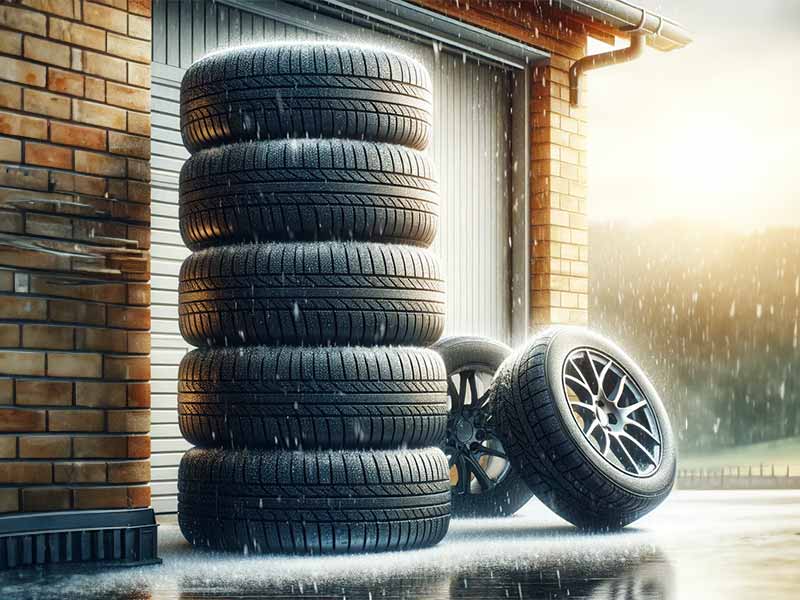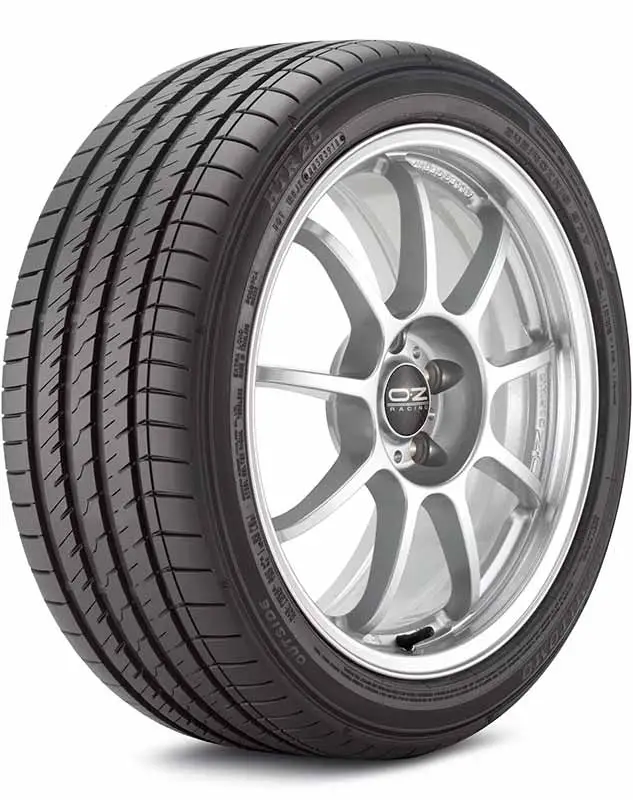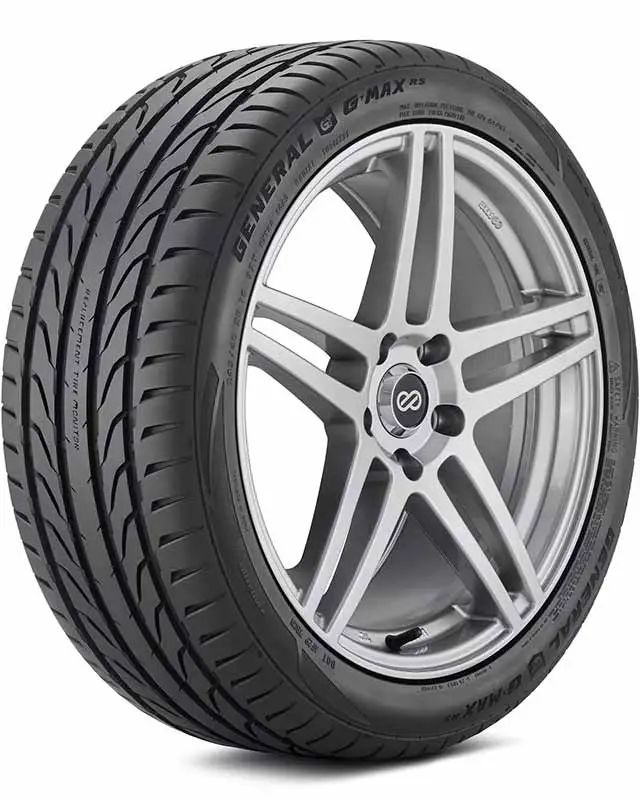Curiosity about tire storage often rolls into our minds as seasons change or when space becomes a premium. You’re not alone in pondering, “Can I tuck my tires away outside when they’re not in use?” Whether it’s the sweltering heat of summer or the icy grip of winter, the well-being of your tires is crucial for your safety and pocket.
Can I Store Tires Outside?
Storing tires outside is not recommended due to the risk of exposure to extreme temperature fluctuations, moisture, and UV rays, all of which can significantly deteriorate tire quality and safety. However, if necessary, certain precautions and protective measures can mitigate these risks.
In this article, we delve into the essentials of tire composition, the risks associated with storing tires outdoors, best practices for minimizing potential damage, and alternative storage solutions. We’ll also navigate through the specific challenges presented by different seasons and provide regular maintenance tips to keep your tires road-ready.
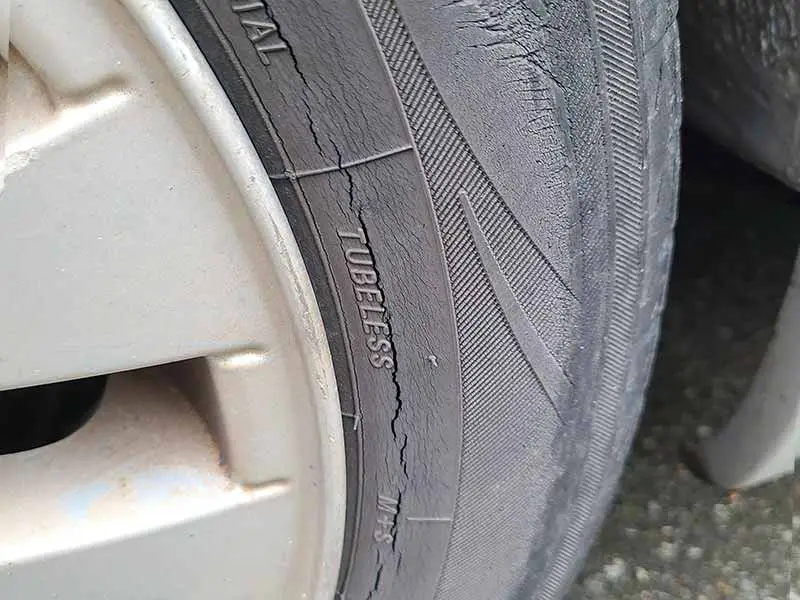
Risks of Outdoor Storage
Storing tires outside might seem like a convenient option, especially if you’re tight on space. However, before you roll those tires into your backyard or side alley, it’s important to understand the risks involved. The elements—sun, temperature, and moisture—can all turn against tires if they’re left unprotected.
Temperature Fluctuations
- Heat Deterioration: High temperatures can cause the rubber in tires to break down and deteriorate faster. This can lead to cracks and splits, especially on the tire’s sidewalls.
- Cold Brittleness: On the flip side, extreme cold can make rubber hard and brittle. This increases the risk of damage when the tire is put back into use, as the inflexible rubber can crack under pressure.
Sunlight Exposure
- UV Rays: The sun’s ultraviolet rays are particularly harsh on tires. Prolonged exposure can lead to the rubber compounds breaking down, resulting in faded color, surface cracks, and ultimately, a weaker tire.
Moisture and Precipitation
- Water Damage: Water, whether from rain, snow, or even ground moisture, can seep into the tire. Over time, this can cause the steel components within the tire, like the beads, to rust and degrade.
- Ice Formation: In colder climates, any water trapped in or around the tire can freeze, expanding and potentially causing structural damage to the tire.
Minimizing Risks
While the risks are real, if you absolutely must store tires outside, there are ways to mitigate potential damage:
- Elevate Them: Keep tires off the ground to reduce moisture absorption and decrease the likelihood of water pooling around them.
- Cover Them Up: Use specially designed tire covers or at least a sturdy, waterproof tarp to protect tires from UV rays and precipitation.
- Rotate Position: Periodically rotate the position of the tires to avoid prolonged pressure on one side, which can deform the shape.
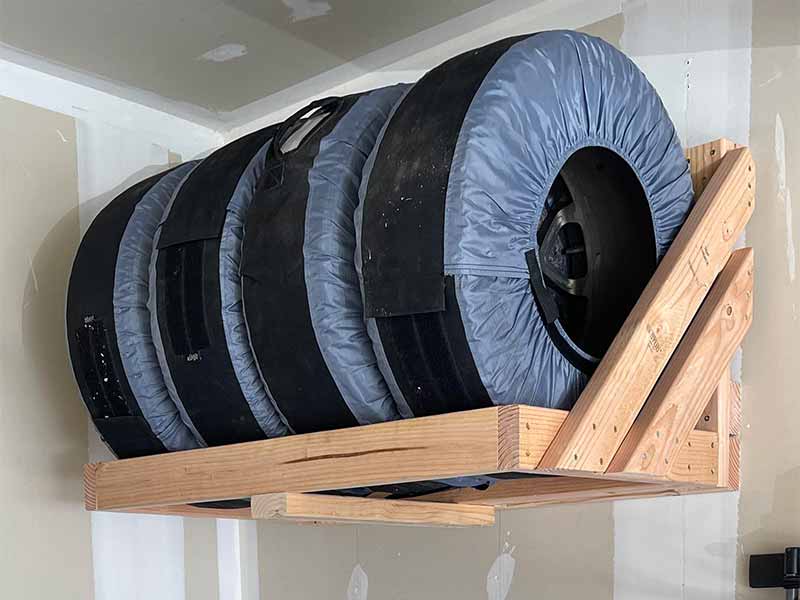
Alternatives to Outdoor Storage
While outdoor storage is sometimes the only option, it’s not the best for your tires’ longevity and performance. Here are some alternatives that provide safer environments for your tires when they’re not in use, ensuring they’re ready to roll when you are.
Indoor Storage: The Best Option
- Cool, Dry, and Dark: The ideal place to store tires is in a temperature-controlled, dry, and dark environment. This could be a basement, garage, or any indoor space away from direct sunlight and with stable, moderate temperatures.
- Elevate and Stack: If storing multiple tires, stack them horizontally to prevent shape distortion. Ensure they’re slightly elevated from the floor, especially if the area might become damp.
- Avoid Ozone: Electrical motors and generators produce ozone which can deteriorate tire rubber. Try to store tires away from such equipment.
Using Protective Materials
- Tire Covers: If you don’t have an indoor space, consider using tire covers designed to protect against UV rays and moisture. These are especially helpful if you must store tires outside temporarily.
- Tire Bags: Sealed plastic bags can also protect tires from humidity and temperature changes. Remove as much air as possible before sealing to minimize oxygen exposure.
Seasonal Swap Tips
- Mark Them: Before storing seasonal tires, mark each tire with its position (front right, rear left, etc.) to make reinstallation easier and to ensure proper rotation.
- Clean Before Storing: Dirt and road salts can eat away at rubber over time. Give your tires a good wash and ensure they’re completely dry before storing.

Tires Storage Bag For Outdoor Use
Seasonal Considerations
Different seasons bring different challenges for tire storage. The sweltering heat of summer and the biting cold of winter each have their own impacts on tire integrity and longevity. Let’s explore what you need to know for each season to keep your tires in top-notch condition.
Summer Storage
- Beat the Heat: High temperatures can accelerate the degradation of rubber. Store your tires in the coolest part of your storage area, away from windows and direct sunlight.
- Humidity Control: Summer can bring humidity. If possible, store tires in a climate-controlled environment or use desiccants to absorb excess moisture in the air.
- Inflation Check: If you’re storing tires mounted on rims, check and adjust the inflation pressure before storage, as hot air can expand and potentially overinflate them.
Winter Storage
- Cold Protection: Cold can make rubber brittle. While tires are designed to withstand cold temperatures when in use, prolonged exposure while static can be detrimental. Keep them in a place that remains above freezing.
- Avoid Wet Areas: Ice formation can cause cracks and other damage. Ensure the storage area is free from water leaks and not prone to flooding or puddling from melted snow.
- Regular Checks: Winter conditions can change rapidly. Regularly check on the stored tires for signs of damage or areas where cold air might be seeping in.
Adapting to the Seasons
Seasonal tire storage isn’t just about reacting to the weather; it’s about proactive care. Here are a few additional tips:
- Transition Timing: Plan your seasonal tire changeover before the weather shifts dramatically. This ensures your tires aren’t exposed to adverse conditions even before storage.
- Documentation: Keep a record of when tires are stored and their condition at the time. This helps track their lifespan and performance over multiple seasons.
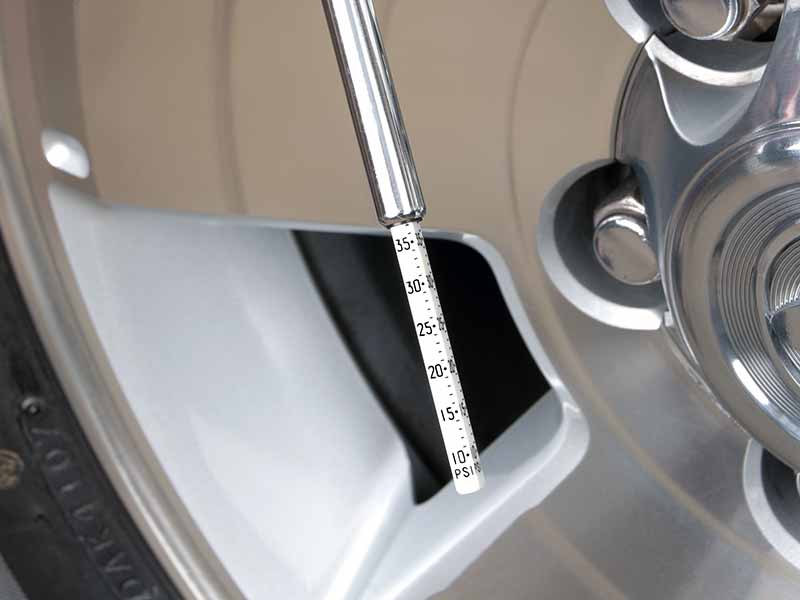
Regular Maintenance and Checks
Even when stored away, tires require regular attention to ensure they remain in good condition and are safe for use when you need them. Here are some maintenance tips and checks to perform on your stored tires, ensuring they serve you well for miles to come.
Inspection Routine
- Visual Checks: Every few weeks, inspect your tires for any visible signs of damage like cracks, bulges, or distortion. Pay special attention to the tread and sidewalls.
- Pressure Checks: For tires stored mounted on rims, check the air pressure periodically. Even when not in use, tires can slowly lose pressure over time.
- Rotate Stored Tires: If you’re storing tires for a longer period, rotate their position occasionally. This helps prevent flat spots or uneven aging.
Handling Common Storage Issues
- Cracks and Dry Rot: If you notice small cracks forming, especially on the sidewalls, this could be a sign of dry rot. Consider whether the storage environment might be too hot, too cold, or too exposed to UV light.
- Flat Spots: Tires left in one position too long can develop flat spots. Regular rotation can help, but if you notice a persistent flat spot, the tire might need professional attention.
- Odors or Discoloration: Strange smells or changes in tire color can indicate chemical reactions or degradation. Ensure tires are stored away from chemicals, oils, or other substances that might cause damage.
Preparing for Re-Installation
- Cleaning: Before you put stored tires back into use, give them a thorough clean to remove any dirt or grime accumulated during storage.
- Condition Check: Ensure there are no structural issues. If anything seems off, it’s better to have a professional inspect the tires before they’re back on the road.
- Record Keeping: Update your documentation with any observations or issues noted during storage and the condition of the tires upon re-installation.
Resources
Below are some links you may find helpful when learning about tires
Final Thoughts
In the journey through understanding the best practices for storing tires, it’s clear that while outdoor storage is sometimes unavoidable, it’s fraught with risks that can compromise tire integrity and your safety.
The ideal scenario is to store them indoors, in a cool, dry, and dark place. If you must store them outside, taking steps such as covering the tires, elevating them off the ground, and regularly checking for damage are essential.
Good luck and happy motoring.
